China has hit back at US President Donald Trump after he slapped punitive tariffs on Chinese goods on Friday, announcing that it would place its own additional 25 per cent tariffs on 659 US imports worth a total of US$50 billion.
Tariffs on about US$34 billion of those products will start on July 6, and be applied to soybeans, corn, wheat, rice, sorghum, beef, pork, poultry, fish, dairy products, nuts and vegetables, autos and aquatic products, China’s finance and commerce ministries said.
‘Death sentence’ for ZTE, demand senators as Trump resists deal repeal
In addition, China said Trump’s move invalidated recent high-level negotiations aimed at averting a trade war.
“All the previous agreements reached through talks will become invalid,” the Ministry of Commerce said in the statement. “China doesn't want to engage in a trade war, but in face of the shortsighted acts from the US side … China is forced to take strong and forceful measures to hit back,” it said.
The effective date of the tariffs on the remaining US$16 billion of American goods will be announced later, the commerce ministry said. Among those items are crude oil, natural gas, coal and some refined oil products.
The list of 659 US goods was longer than a preliminary list of 106 products published by the Chinese commerce ministry in April, although their remained unchanged at US$50 billion. Aircraft, which were previously included, were not on the revised list.
China’s response came on Friday afternoon, hours after Trump confirmed his plan to slap punitive tariffs on Chinese products that “contain industrially significant technologies”. The move is part of his effort to close a bilateral trade gap and force Beijing to change the way it acquires US technology.
Chinese exporters ‘front-loading shipments’ due to trade tensions
The US will put a 25 per cent tariff on US$50 billion worth of annual imports from China, including “goods related to China’s Made in China 2025 strategic plan to dominate the emerging high-technology industries that will drive future economic growth for China, but hurt economic growth for the United States and many other countries”, Trump said in an official White House statement.
Made in China 2025 refers to Beijing’s industrial policy of subsidising domestic companies developing strategic advanced technologies, including robotics and artificial intelligence.
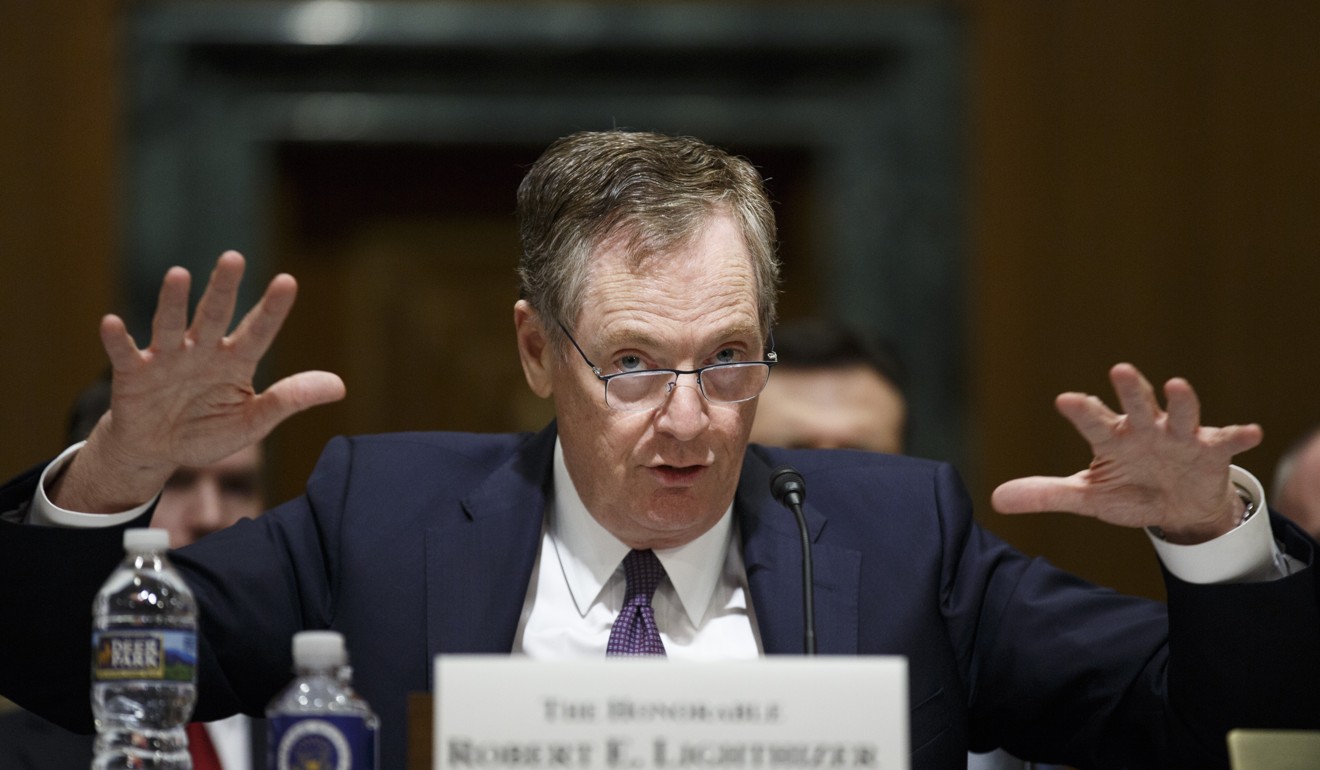
US Trade Representative Robert Lighthizer has led investigations into the trade and investment practices Trump has targeted. Photo: Bloomberg
China has “long been engaging in several unfair practices related to the acquisition of American intellectual property and technology. These practices … harm our economic and national security and deepen our already massive trade imbalance with China,” Trump said.
US stocks retreated on Friday amid the countries’ competing announcements, with major indices in the red the entire session, although they closed above their session lows.
The Dow Jones Industrial Average dropped 0.3 per cent to end the week at 25,090.48. The broad-based S&P 500 slipped 0.1 per cent to close at 2,779.42, and the tech-rich Nasdaq Composite index lost 0.2 per cent to 7,746.38, retreating from Thursday’s record.
Is it time Beijing ditched its ‘Made in China 2025’ strategy?
Large multinationals active in China were among the worst performers in the Dow, with Caterpillar losing 2 per cent and Boeing and General Electric both falling more than 1 per cent.
Petroleum-linked shares also tumbled on a pullback in oil prices due in part to the trade discord. Chevron fell 2 per cent, Halliburton 2.4 per cent and ConocoPhillips 4.1 per cent.

Traders and financial professionals work ahead of the closing bell on the floor of the New York Stock Exchange on Friday. Photo: Getty Images via AFP
Trump’s announcement on Friday follows up on pledges he has made since he campaigned in 2016 to address the long-running US trade deficit with China.
That gap rose to a record US$375 billion last year and amounted to US$119 billion in the first four months of 2018, according to US government data.
Trump tariffs may cost US auto industry 1 million car sales a year
Trump vowed to fight any retaliation by China – be it tariffs, non-tariff barriers or “punitive actions against American exporters or American companies operating in China” – with additional tariffs, raising the possibility of an all-out trade war.
“The Trump administration is now committed to tariffs on US$50 billion of imports from China, and China has signalled that it will retaliate on US$50 billion of US exports,” David Dollar, a China expert at the Brookings Institution, a Washington-based think tank, told the South China Morning Post.
“The question that no one can answer right now is whether Trump will then escalate into a full-blown trade war. It is hard to see either side backing down in the near future.”
Trump has bipartisan support among lawmakers to take measures to curtail acquisition of US technology by Chinese interests, as many of them see such transfers as strengthening China’s military capabilities.
Some technology sought by Chinese investors has military applications, the US Defence Department warned in a report published last year.
G7 trade divisions ‘won’t help China’s negotiations with US’
The Trump administration’s tactics are bumping up against Beijing’s overarching economic ambitions.
“One of the things that [Chinese President] Xi Jinping is focused on is the transformation [of his country] from the manufacturing centre of the world to the innovation centre of the world,” Elizabeth Economy, director for Asia Studies at the Council on Foreign Relations, said in a discussion at the Wharton Global Forum on Thursday.
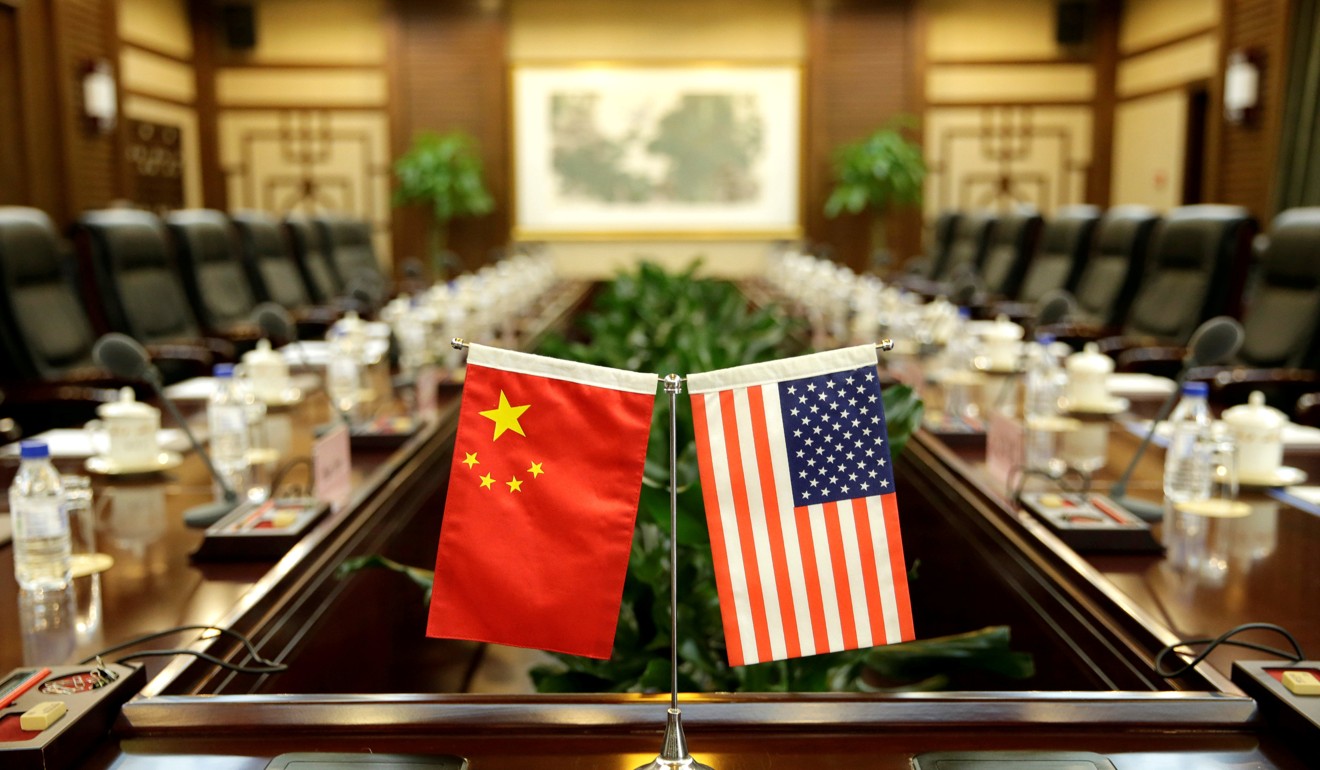
China’s Ministry of Commerce warned that all previous agreements reached through talks with the US would become invalid if Trump pushed ahead with his punitive tariffs on Chinese goods. Photo: Reuters
“They’re using subsidies to encourage Chinese firms and give them an advantage,” she said. Moreover, “a number of restrictions or regulations … make it difficult for foreign companies to compete” in China, Economy said.
US Trade Representative Robert Lighthizer has led investigations into the trade and investment practices Trump has targeted.
US businesses grit their teeth as trade war looms
A nearly 200-page report from the trade representative’s office published in March alleges, among other things, that these policies “deprive US companies of the ability to set market-based terms in licensing and other technology-related negotiations with Chinese companies and undermine US companies’ control over their technology in China”.
Still, some in the US corporate sector are condemning Trump’s decision to address trade imbalances and investment restrictions through unilateral tariff measures.
“We urge both governments to sit down and negotiate a solution to these important issues. American companies want solutions, not sanctions,” US-China Business Council (USCBC) President John Frisbie said in a statement.
“Tariffs will not solve these problems, but will harm American economic interests and jobs. Rather than inflicting damage on ourselves, we should be seeking ways to address the problems with China,” he said.
“Pursuing pragmatic outcomes in coordination with other like-minded trading partners is a better approach than going it alone and exposing American workers, farmers and companies to retaliation.”
Some analysts played down the urgency of the latest phase in US-China trade tensions, pointing out that both sides have returned to dialogue despite regular rhetorical flare-ups.
“Clearly there’s a lot of ups and downs, and both sides seem to be OK with that,” Bart Oosterveld, director of the Washington-based Atlantic Council’s Global Business and Economics Programme, told the Post.
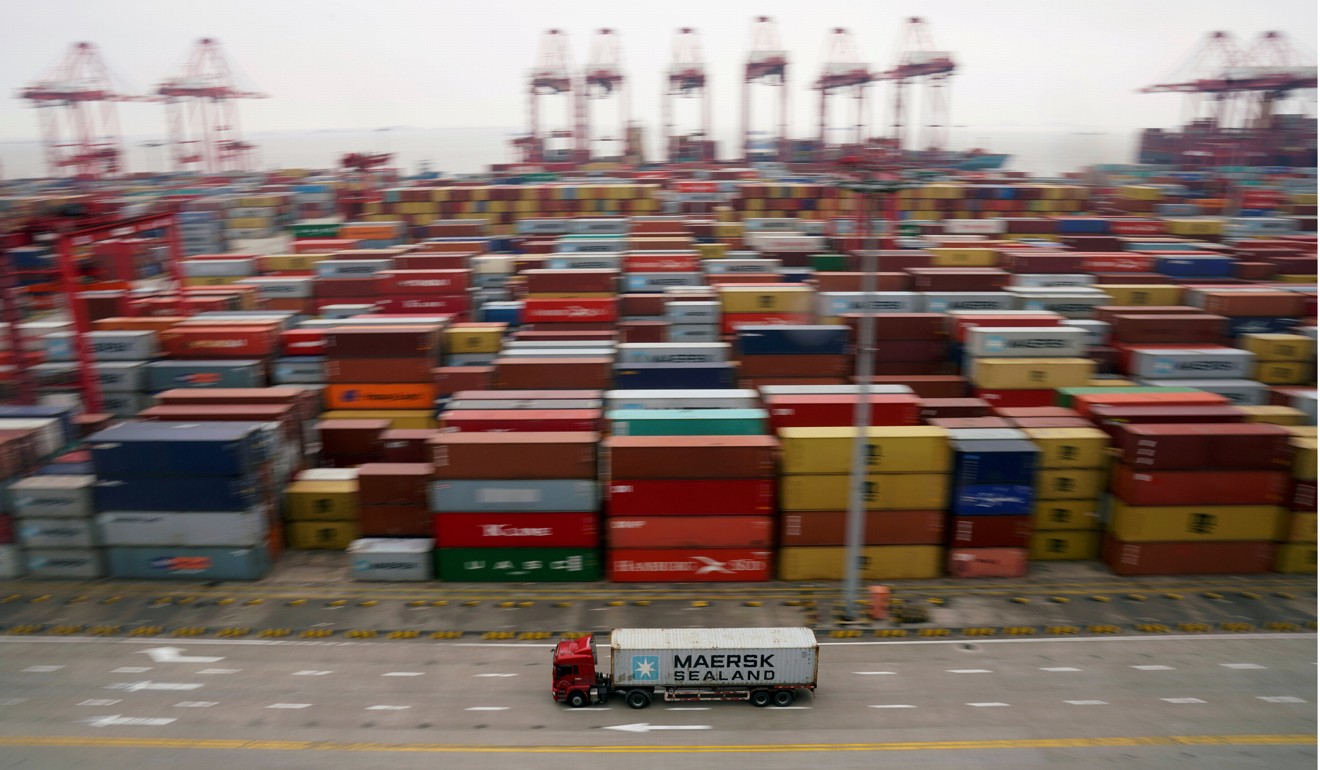
Trump vowed to fight any retaliation by China with additional tariffs, keeping open the possibility of a full-blown trade war. Photo: Reuters
“They do seem to get past pretty rough statements made against each other and then get back to the table again.”
Oosterveld said he expected the parties would strike an agreement that could halt the confrontation “probably at some point this year”.
Allowing the trade battle to continue would be “very costly” over time for “both economies and for consumers in both economies”, the director said. “In the meantime, we may see some further escalations.”
Derek Scissors, a China expert at the American Enterprise Institute, another Washington-based think tank, agreed.
“This is far too small a step to lead to a serious trade conflict,” Scissors told the Post.
“I believe the initial tariffs will go into effect July 6. However, the second set of tariffs allows time for negotiations, which could lead to the initial tariffs being lifted after only a few months.”
The White House announcement on Friday did not say when the US tariffs would take effect.
Additional reporting by Zhou Xin, AFP and Reuters
This article appeared in the South China Morning Post print edition as: Trump Raises the stakes in trade dispute with China
China News
15 Jun 2018
China’s latest quantum radar won’t just track stealth bombers, but…
China News
14 Jun 2018
No nukes, no sanctions for North Korea, US Secretary of State Mike…
China News
15 Jun 2018
Chinese navy deploys drones in South China Sea missile drills
News
15 Jun 2018
Everything you need to know about Hong Kong’s joint rail checkpoint…
Lifestyle
27 May 2018
Google News boosts AI to break down media ‘filter bubble’ that…
Comment
15 Jun 2018
Politics not privacy fears behind Huawei spying claim by US
China News
15 Jun 2018
China ‘ready to hit back’ at Donald Trump’s tariffs
China News
14 Jun 2018
Donald Trump vows to pursue aggressive trade action in ‘coming weeks’…
China News
13 Jun 2018
US pushing China on beef, biotech in trade row talks, official reveals
Comment
13 Jun 2018
Hong Kong educators should leave politics at the door
China News
15 Jun 2018
China’s latest quantum radar won’t just track stealth bombers, but…
China News
14 Jun 2018
No nukes, no sanctions for North Korea, US Secretary of State Mike…
China News
15 Jun 2018
Chinese navy deploys drones in South China Sea missile drills
News
15 Jun 2018
Everything you need to know about Hong Kong’s joint rail checkpoint…
Lifestyle
27 May 2018
Google News boosts AI to break down media ‘filter bubble’ that…
Comment
15 Jun 2018
Politics not privacy fears behind Huawei spying claim by US
China News
15 Jun 2018
China ‘ready to hit back’ at Donald Trump’s tariffs
China News
14 Jun 2018
Donald Trump vows to pursue aggressive trade action in ‘coming weeks’…
China News
13 Jun 2018
US pushing China on beef, biotech in trade row talks, official reveals
Comment
13 Jun 2018
Hong Kong educators should leave politics at the door

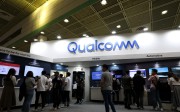
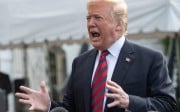

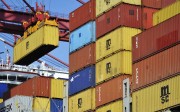







Aucun commentaire:
Enregistrer un commentaire